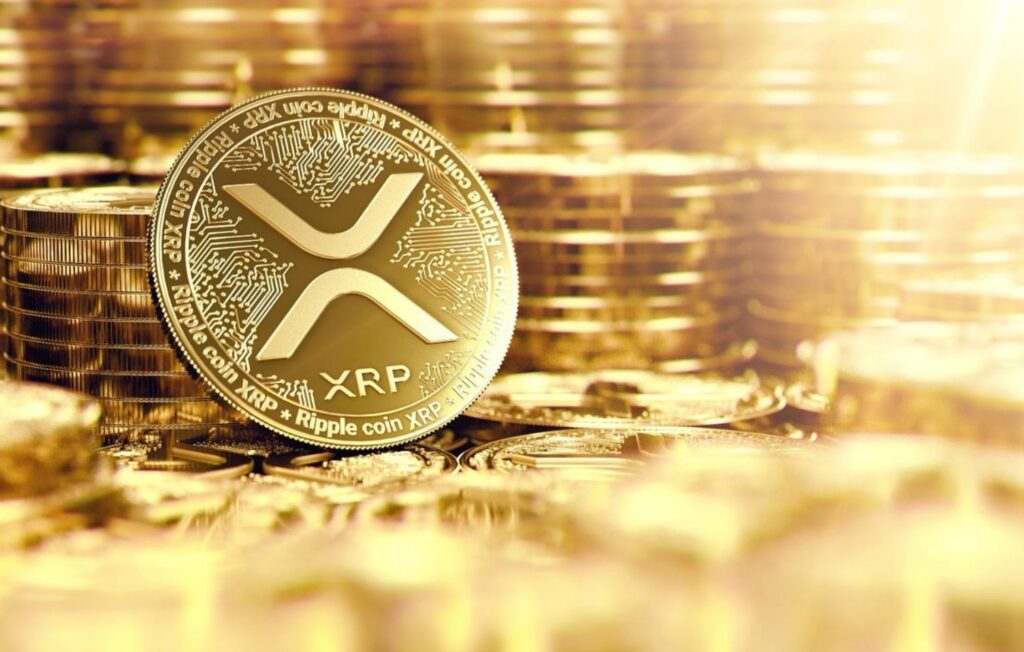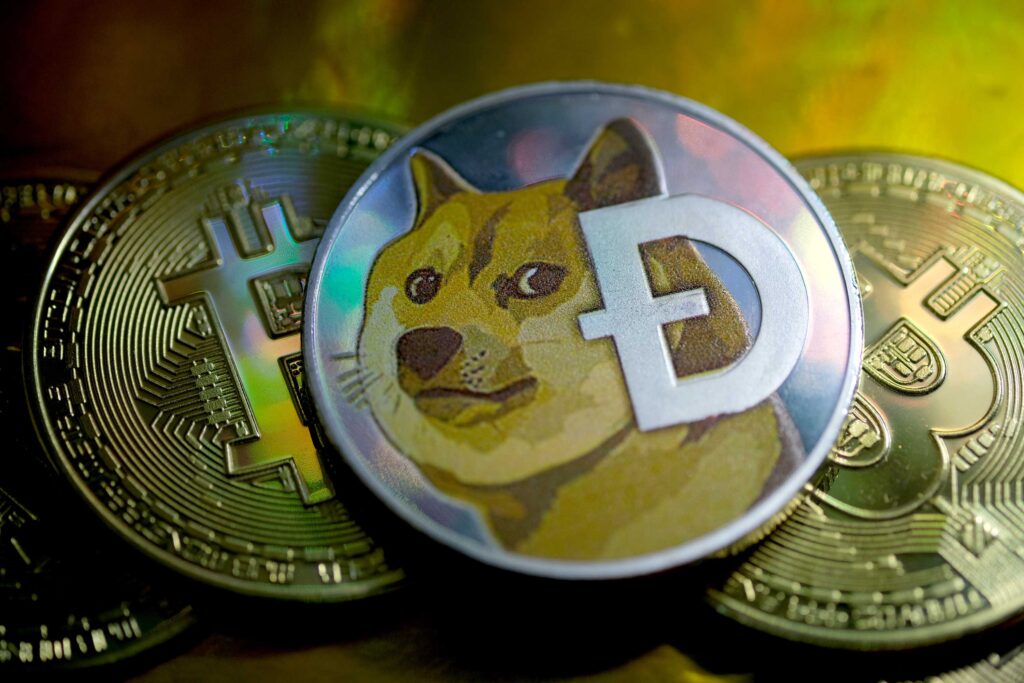This article represents a detailed description of the 10 latest types of Cryptocurrency. CoinMarketCap reports that there are approximately 21,910 cryptocurrencies, with a total market capitalization of $850 billion. That’s quite a crowd considering that Bitcoin only launched in 2009.
Cryptocurrencies are intended for payments, transmitting value across a decentralized network of users.

Many altcoins are classified in this way and may sometimes be called value tokens.
Bitcoin is considered the first cryptocurrency created, and other individual cryptocurrencies are known as “altcoins”. It’s difficult to say which cryptos are the best ones, but Bitcoin and some of the largest altcoins out there are top-tier options because of their scalability, privacy, and the scope of functionality they support.
Coins:
Coins can be differentiated from altcoins because they are based on their blockchain. On such a blockchain, they act as the native token as well as gas or fuel payment token, although a blockchain can have the gas paid in a different cryptocurrency. A good example is Bitcoin on the Bitcoin and Ether or ETH on the Ethereum blockchain.

Altcoins:
Although these can be regarded as coins, they are all understood to be alternatives to Bitcoin as the first cryptocurrency. Also known as shitcoins, apart from Ethereum, most of the first ones were forked from Bitcoin. These include Namecoin, Peercoin, Litecoin, Dogecoin, and Auroracoin.
Tokens:
Tokens are digital representations of a particular asset or utility in a blockchain. All tokens can be termed altcoins, but they are differentiated by residing on top of another blockchain and not being native to the blockchain on which they reside.

Some differences between Coins and Tokens
| Coins | Tokens | |
| 1. | Built into a blockchain (native to its own blockchain technology) | Built on top of an existing blockchain. |
| 2. | Requires significant resources and skills to create. | Relatively easy to create. |
| 3. | Mostly distributed through mining. | Mostly distributed through ICOs. |
| 4. | Used to store transfer money. | Valid with one merchant. |
| 5. | Valid with any merchant who uses the currency. | Variety of uses (security assets and representation). |
Why are there so many types of cryptocurrency?
Blockchain technology is open source, meaning any software developer can use the original source code and create something new with it. Developers have done just that. There are estimated to be more than 10,000 different cryptocurrencies in circulation at the time of this writing, and the figure keeps increasing. For reference, the number of cryptos surpassed 1,000 only four years ago.

Part of the reason for the surge is the relative ease with which new cryptocurrencies can be created. The source code of one can be used to build another. Bitcoin Cash was created in 2017 as a result of a Bitcoin fork allowing more transactions to be recorded on a single block of the blockchain.
Surging crypto prices have led many developers to try getting a cut of the action. And blockchain technology has usefulness beyond just digital currencies.
Here are the 10 latest types of cryptocurrency and most popular digital coins and how each is being used.
Bitcoin

Short Name: BTC
Price and value
Price: $16,509
Market cap: $318 billion
Total Market Value: $749 billion
Briefing
Bitcoin was the world’s first cryptocurrency, with its origins dating back to a white paper published in 2008, and remains the best-known type of crypto. It functions on its own blockchain, with transactions verified by an army of decentralized miners. In January 2022, Bitcoin was the cryptocurrency with the largest market cap, at US$896 billion.
As the harbinger of the cryptocurrency era, Bitcoin is still the coin people generally reference when they talk about digital currency. Its mysterious creator — allegedly Satoshi Nakamoto — debuted the currency in 2009 and it’s been on a roller-coaster ride since then. However, it wasn’t until 2017 that cryptocurrency broke into popular consciousness.
Ethereum

Short Name: ETH
Price and value
Price: $1,190
Market cap: $146 billion
Total Market Value: $313 billion
Briefing
Ether is the cryptocurrency that runs on the Ethereum blockchain. Like Bitcoin, Ether operates on its own blockchain—but unlike Bitcoin, Ether is uncapped, meaning that an infinite number of coins can theoretically be created. Ethereum also supports smart contracts, which are programs that run on the Ethereum blockchain and are executed automatically when certain conditions are met.
Ethereum — the name for the cryptocurrency platform — is the second name you’re most likely to recognize in the crypto space. The system allows you to use ether (the currency) to perform a number of functions, but the smart contract aspect of Ethereum helps make it a popular currency.
Tether

Short Name: USDT
Price and value
Price: $1.00
Market cap: $66 billion
Total Market Value: $79.5 billion
Briefing
Tether is a type of stablecoin, designed to have a less-volatile price by being linked to an external asset. In this case, each coin is backed by an equivalent number of US dollars, which keeps it from experiencing the same kind of pricing volatility that other cryptocurrencies face. There is however, some debate about whether it truly is fully backed by the dollar.
Tether’s price is anchored at $1 per coin. That’s because it is what’s called a stablecoin. Stablecoins are tied to the value of a specific asset, in Tether’s case, the U.S. Dollar. Tether often acts as a medium when traders move from one cryptocurrency to another. Rather than move back to dollars, they use Tether. However, some people are concerned that Tether isn’t safely backed by dollars held in reserve but instead uses a short-term form of unsecured debt.
USD Coin

Short Name: USDC
Price and value
Price: $1.00
Market cap: $44 billion
Total Market Value: $53.2 billion
Briefing
USD Coin also pegs its price to the U.S. dollar using fiat-collateralized reserves, which means it holds an amount of fiat currency equal to the amount of USD Coin in circulation.
USD Coin was launched in 2018 by the Centre Consortium, which consists of Circle and Coinbase. Because Circle is based in the U.S., it is subject to regulation—this makes USD Coin a regulated stablecoin.
USD Coin is a stablecoin connected to the US dollar that cannot be mined. However, unlike Tether, USD Coin has more transparent funding and better auditing processes. The aim is to remove some of the risk associated with crypto, as users should always be able to withdraw their coins and receive the corresponding amount of cash in exchange.
Binance Coin

Short Name: BNB
Price and value
Price: $244.54
Market cap: $39 billion
Total Market Value: $62.6 billion
Briefing
Binance Coin (BNB) is a utility cryptocurrency that operates as a payment method for the fees associated with trading on the Binance Exchange. It is the third-largest cryptocurrency by market capitalization.
Binance Coin is native to Binance, the world’s largest cryptocurrency exchange as of 2021. Transaction fees for this exchange are reduced for users who choose to pay in BNB. This has encouraged the adoption of Binance Coin, making it one of the largest cryptocoins in the market. To ensure its value remains stable, Binance destroys or “burns” a fixed percentage of the coins in circulation.
BNB is the cryptocurrency issued by Binance, among the largest crypto exchanges in the world. While originally created as a token to pay for discounted trades, Binance Coin can now be used for payments as well as purchasing various goods and services.
XRP

Short Name: XRP
Price and value
Price: $0.346
Market cap: $17 billion
Total Market Value: $34.4 billion
Briefing
XRP is the native token for the XRP Ledger, created as a payment system by Ripple in 2012. The XRP Ledger uses a consensus mechanism called the XRP Ledger Consensus Protocol, which doesn’t use proof-of-work or proof-of-stake for consensus and validation.
Formerly known as Ripple and created in 2012, XRP offers a way to pay in many different real-world currencies. Ripple can be useful in cross-border transactions and uses a trust-less mechanism to facilitate payments.
XRP, which runs on the Ripple network, has been described as a “cryptocurrency for banks” because it’s tailor-made to serve the needs of the financial services industry. Conceived as a way to facilitate international payments, XRP acts as a bridge between two different currencies to offer cheaper, quicker global transfers.
Binance USD

Short Name: BUSD
Price and value
Price: $1.00
Market cap: $17 billion
Total Market Value: $38.86 billion
Briefing
Binance USD was created by the cryptocurrency exchange Binance as a stablecoin pegged to the U.S. dollar. The stablecoin was approved by the New York State Department of Financial Services; thus, it is also regulated.
Binance USD is a dollar-backed stablecoin from top crypto exchange Binance in partnership with Paxos. Binance USD was launched in 2019 and is regulated by the New York Department of Financial Services. BUSD runs on top of the Ethereum blockchain.
Dogecoin

Short Name: DOGE
Price and value
Price: $0.07033
Market cap: $9 billion
Total Market Value: $9.59 billion
Briefing
Dogecoin was created by two software engineers, Billy Markus and Jackson Palmer, in 2013. Markus and Palmer reportedly created the coin as a joke, commenting on the wild speculation of the cryptocurrency market.
Originally created to poke fun at Bitcoin, Dogecoin has now become one of the most valuable cryptocurrencies in circulation. Founded in 2013 and inspired by a dog meme from the same year, Dogecoin first made a name for itself in 2021, and now has a market worth of 8.4 billion euro, as of October, 2022. Dogecoin is a Litecoin fork, and like Bitcoin, is based on blockchain technology.
Dogecoin (DOGE), seen by some as the original “memecoin,” caused a stir in 2021 as its price skyrocketed. The coin, which uses an image of the Shiba Inu as its avatar, is accepted as a form of payment by some major companies.
Cardano

Short Name: ADA
Price and value
Price: $0.2447
Market cap: $8 billion
Total Market Value: $28.4 billion
Briefing
ADA is the native coin of the Cardano blockchain. Dubbed a “third-generation” cryptocurrency, Cardano splits its blockchain into two layers to increase transaction speeds and implements native tokens to ensure a better experience for ADA holders.
Cardano stands out among its PoS peers and other prominent cryptocurrencies. Cardano has also been dubbed an “Ethereum killer” because its blockchain is said to be capable of more.
Cardano aims to be the world’s financial operating system by establishing DeFi products similar to Ethereum’s and providing solutions for chain interoperability, voter fraud, and legal contract tracing, among other things. As of Sep. 18, 2022, Cardano has the eighth-largest market capitalization at $15.9 billion, and one ADA traded for around $0.47.
Polygon

Short Name: MATIC
Price and value
Price: $0.7782
Market cap: $7 billion
Total Market Value: $7 billion
Briefing
Polygon is a cryptocurrency that focuses on being accessible to those creating digital apps and scales up the Ethereum cryptocurrency. It was previously known as Matic and was formed in 2017, though switched its name to Polygon in 2021.
Polygon (previously Matic Network) is the first well-structured, easy-to-use platform for Ethereum scaling and infrastructure development. Its core component is Polygon SDK, a modular, flexible framework that supports building multiple types of applications.
Polygon is self-described as a Layer 2 scaling solution, which means that the project doesn’t seek to upgrade its current basic blockchain layer any time soon. The project focuses on reducing the complexity of scalability and instant blockchain transactions.
Check Also: What are Cryptocurrency and benefits?
Frequently Asked Questions (FAQs)
What are the 4 types of cryptocurrency?
Payment Cryptocurrencies, Tokens, Stablecoins, and Central Bank Digital Currencies.
Which crypto will explode this year?
There are just a handful of cryptocurrencies that did not explode this year, especially because of the massive gains experienced with the largest crypto Bitcoin.
Why are there so many cryptocurrencies?
People saw the success of Bitcoin and tried to improve existing functionality and provide new functionality with new cryptocurrencies.
How are cryptocurrency transactions recorded?
Cryptocurrency transactions are recorded on a shared, digital ledger called a blockchain.
What are cryptocurrencies?
Cryptocurrencies are a digital asset that started as a medium of exchange for people to buy goods and services. Over time, their functionality has expanded.





